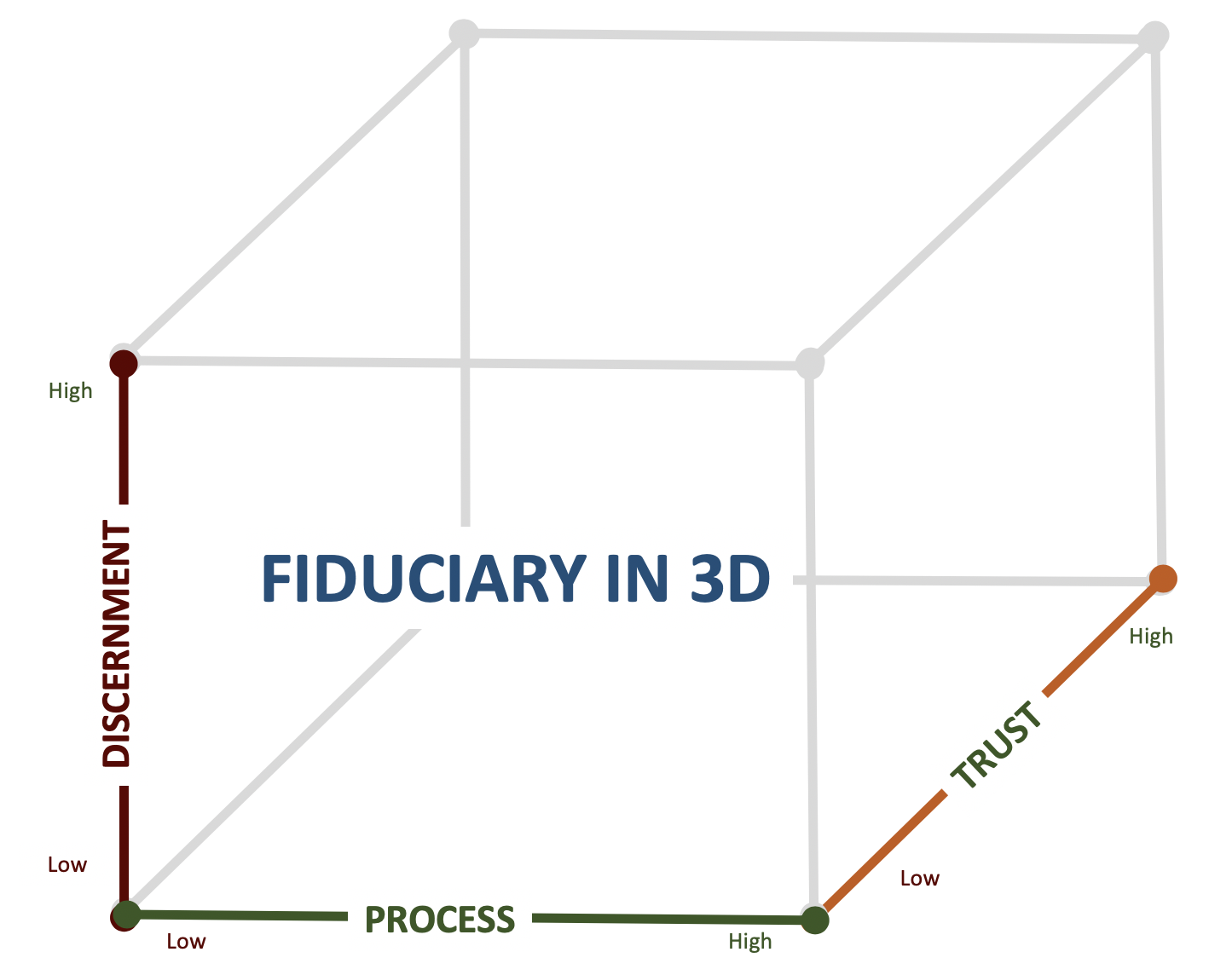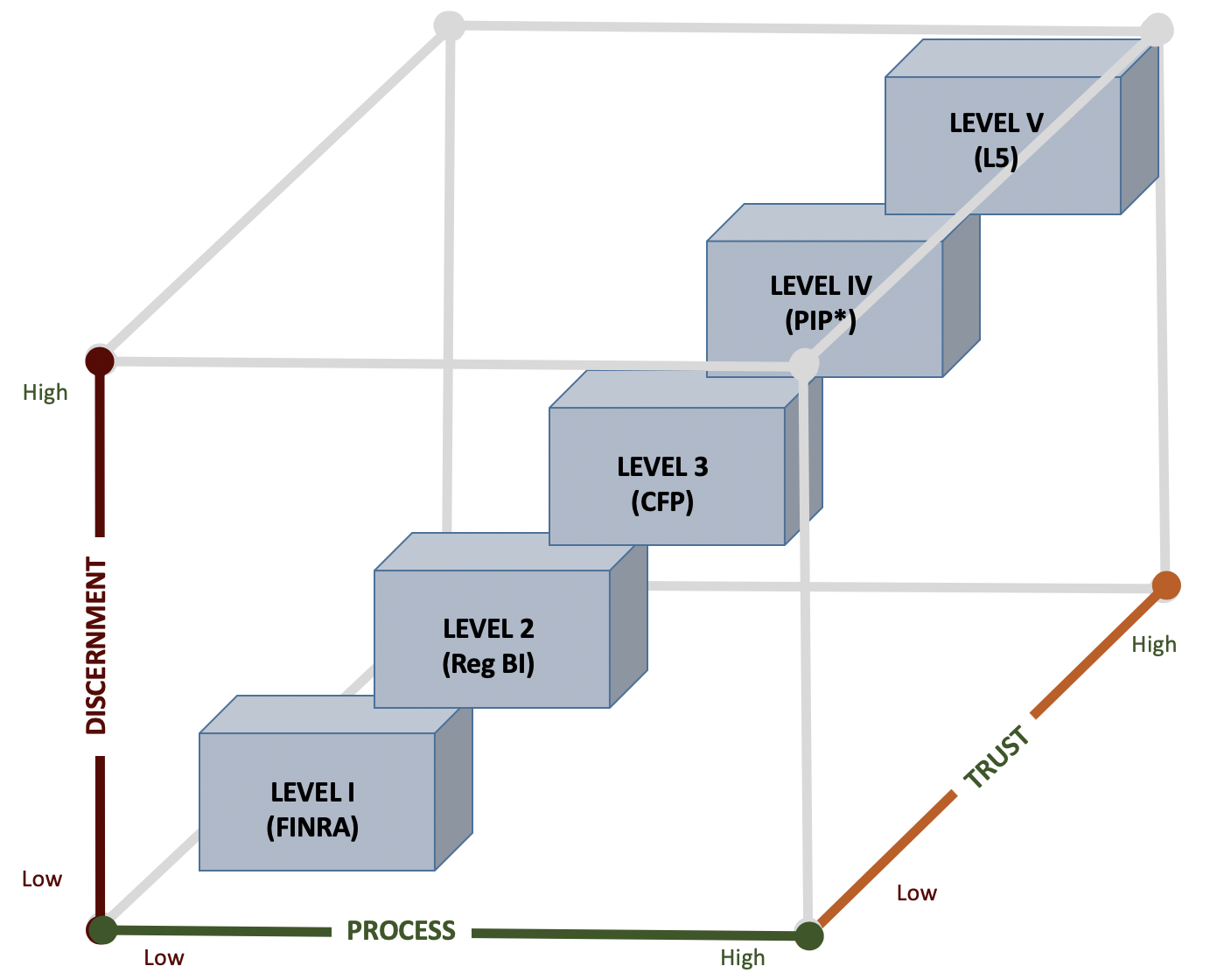Come June 30th, there won’t be much of a difference.
A ‘clerk’ is employed to perform menial office tasks. They’re told what to do, have little or no discretion, and are not entrusted with critical decision-making.
That may describe you in less than 45 days.
The SEC’s Reg BI is going to cause more harm than good. To illustrate, let’s examine the concept of ‘fiduciary’ in 3D.
We’ll make the x-axis, Process – your ability to demonstrate the details of a prudent decision-making framework that includes best practices and generally accepted investment principles.
The y-axis, Discernment - your capacity for wise and objective decision-making.
And, the z-axis, Trust – your ability to demonstrate compassion, character, and competence.

With the use of this 3D model, we can now plot the three different standards of care that impact nearly every broker and advisor

The suitability standard is plotted in the bottom left-hand corner – it requires the least amount of process and discernment, which creates the least amount of trust.
The best interests standard is plotted in the center – it requires some process and discernment, which generates some trust.
The procedural prudence standard is plotted in the upper right-hand corner – it requires the most process, the highest level of discernment, which generates the most trust.
When you superimpose current and forthcoming fiduciary standards to this same 3D model you’ll discover that there will soon be five distinct levels of fiduciary, or quasi-fiduciary standards.

Level I is based on the sutiability standard, with FINRA being the curator.
Level II is based on a best interests standard, which the SEC is using as the basis for Reg BI.
Level III also is based on a best interests standard, which is then augmented with principles. This is where we would plot the new fiduciary standard for CFPs.
Level IV is based on the higher procedural prudence standard. The best illusrtation of Level IV is the handbook, Prudent Investment Practices, which was written by the Foundation for Fiduciary Studies in 2003. Yes, seventeen years ago we were defining a much higher fiduciary standard then what policy makers are defining today.
Level V also is based on a procedural prudence standard. Level V is a voluntary standard that utilizes a uniform decision-making framework and incorporates the groundbreaking research in Neuro-leadership. This research informs us that there are certain leadership and stewardship behaviors that will improve the quality of a decision-making process. There’s another benefit – Level V is designed to accelerate the development of the more than 8,000,000 men and women who serve as lay-fiduciaries and who manage the assets of pension plans, foundations, endowments, and personal trusts. Lay-fiduciaries struggle with understanding their fiduciary duties, but they ‘get’ the fact that they’re serving in a critical leadership and stewardship role.
These same constructs can be presented in tabular form:

As if we already don’t have enough to worry about with Covid-19, now we have to deal with two new fiduciary standards (Levels II and III) that are based on complex rules and disclosures. It’s a shame; we’ll now be using disclosures as a surrogate for an advisor’s procedural prudence.
Tragically, we’re backsliding from where we were twenty years ago. As we move forward, the industry won’t be developing prudent fiduciaries and leaders…we’ll be managing clerks.

